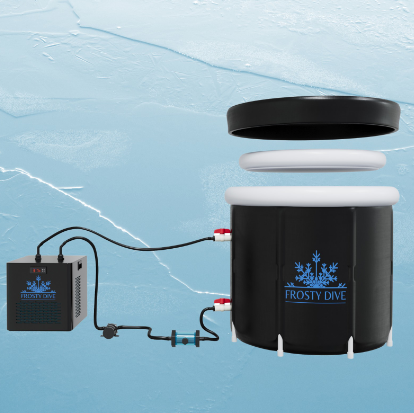Climbing is an exhilarating mix of strength, strategy, and sheer willpower. You scale new heights, push your limits, and conquer your fears. But whether you’re a seasoned climber or a beginner, one thing can significantly impact your performance: your climbing shoes.
In this blog post, we’ll explore why climbing shoes are so crucial, what makes the best climbing shoes stand out, and how to choose the perfect pair for your adventures. If you’re a climbing enthusiast, a fitness seeker aiming for new challenges, or an outdoor adventurer looking to elevate your game, read on to discover the world of climbing shoes.
The Foundation of Climbing: Why Shoes Matter
When it comes to climbing, your shoes are more than just gear—they’re a fundamental extension of your body. They provide the grip, support, and precision you need to navigate different surfaces. A good pair of climbing shoes can make the difference between a successful ascent and a frustrating slip.
Grip and Friction
The grip is arguably the most important feature of climbing shoes. Specialized rubber soles provide the friction needed to adhere to various climbing surfaces. Whether you’re dealing with slippery indoor holds or rough outdoor rocks, having the right grip can prevent slips and help you maintain balance.
Precision and Control
Climbing often requires careful foot placement on tiny holds and edges. Butora climbing shoes are designed to enhance your foot’s precision, allowing you to place weight accurately. This control is crucial for complex maneuvers and technical climbs, where even a slight misstep can lead to failure.
Support and Comfort
While grip and precision are vital, support and comfort shouldn’t be overlooked. Good climbing shoes offer enough support to reduce foot fatigue and prevent injuries. They should also be comfortable enough to wear for extended periods, allowing you to focus on climbing rather than discomfort.
Types of Climbing Shoes
Not all climbing shoes are created equal. Understanding the different types can help you choose the best pair for your needs. Here are the main categories to consider:
Neutral Shoes
Neutral climbing shoes are designed for comfort. They have a relaxed fit, making them ideal for beginners and long climbing sessions. These shoes are great for all-day wear and provide decent support and grip.
Moderate Shoes
Moderate climbing shoes have a slightly downturned shape, offering a balance between comfort and performance. They are versatile and suitable for various climbing styles, from indoor bouldering to outdoor sport climbing.
Aggressive Shoes
Aggressive climbing shoes feature a pronounced downturn, providing maximum precision and power. They are best suited for advanced climbers tackling steep or overhanging routes. While they offer exceptional performance, they may sacrifice some comfort.
Key Features to Look For
When selecting climbing shoes, several key features can influence your choice. Understanding these features will help you find a pair that suits your climbing style and preferences.
Fit and Sizing
The fit of your climbing shoes is crucial. They should be snug but not painfully tight. A well-fitted shoe provides better control and reduces the risk of blisters. Remember that climbing shoes often stretch a bit, so consider this when choosing your size.
Rubber Quality
The quality of the rubber sole affects grip and durability. Softer rubber offers better friction but wears out faster, while harder rubber is more durable but provides less grip. Choose a rubber that matches your climbing needs and frequency.
Closure Systems
Climbing shoes come with different closure systems, including laces, Velcro straps, and slip-ons. Laces allow for the most precise fit adjustment, Velcro straps offer convenience, and slip-ons are easy to get on and off. Choose a closure system that fits your preference and climbing style.
Material and Construction
The materials and construction of climbing shoes impact their performance and longevity. Leather shoes tend to stretch more, while synthetic materials offer less stretch and more consistency. Consider the shoe’s construction, such as whether it’s lined or unlined, to determine how it will mold to your foot over time.
Breaking in Your Climbing Shoes
New climbing shoes can be stiff and uncomfortable initially. Breaking them in properly ensures they mold to your feet and provide the best performance.
Gradual Wear
Start by wearing your new shoes for short climbing sessions. Gradually increase the duration as they become more comfortable. This process helps the shoes conform to your foot shape without causing excessive pain or blisters.
Stretching Techniques
If your shoes are too tight, try some stretching techniques. Wearing them around the house with thick socks can help stretch them gently. Some climbers also use shoe stretchers or localized heat to soften specific areas.
Maintenance and Care
Proper maintenance extends the lifespan of your climbing shoes. Keep them clean, avoid excessive exposure to sunlight, and store them in a cool, dry place. Regularly inspect the soles for wear and consider resolving them if necessary.
Common Climbing Scenarios
Different climbing scenarios require different shoe features. Here are some common climbing environments and the best shoe types for each:
Indoor Climbing
Indoor climbing gyms often feature artificial holds and walls. Neutral or moderate shoes are generally sufficient for indoor climbing, as they provide comfort and versatility for various routes.
Outdoor Climbing
Outdoor climbing presents diverse surfaces, from smooth granite to rough limestone. Moderate or aggressive shoes are ideal for outdoor climbing, offering the precision and grip needed for natural rock formations.
Bouldering
Bouldering involves short, intense climbs without ropes. Aggressive shoes are preferred for bouldering, as they provide the power and precision needed for dynamic movements and small footholds.
The Impact of Climbing Shoes on Performance
Climbing shoes play a significant role in your performance on the wall. The right pair can make challenging routes more manageable, while ill-fitting or unsuitable shoes can hinder your progress.
Technique Improvement
Climbing shoes can help improve your technique by providing better control and grip. With the right pair, you may be able to tackle more difficult routes and learn new techniques.




